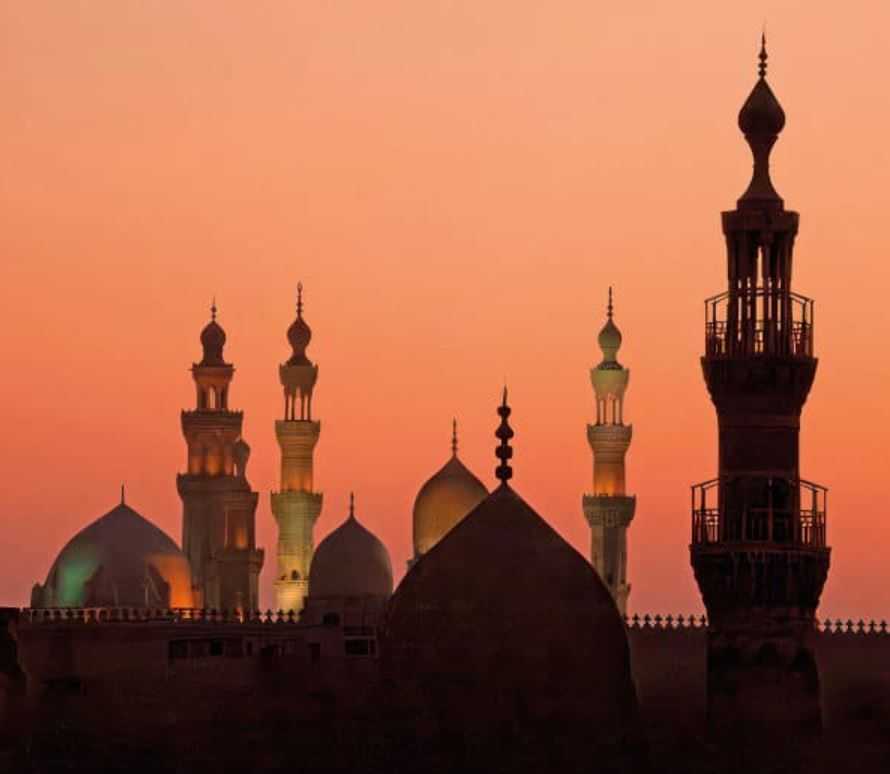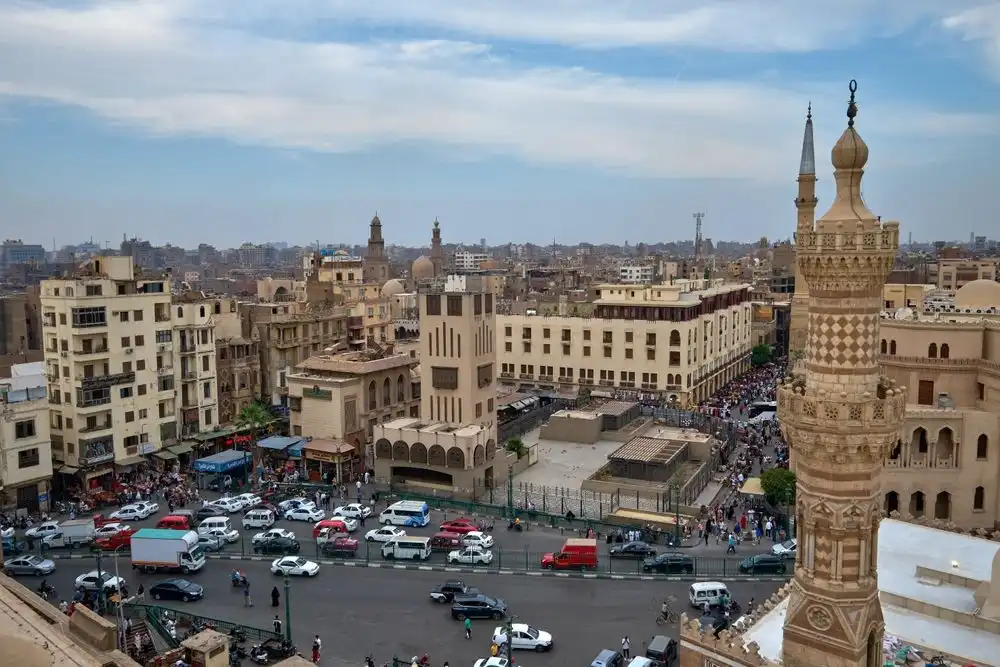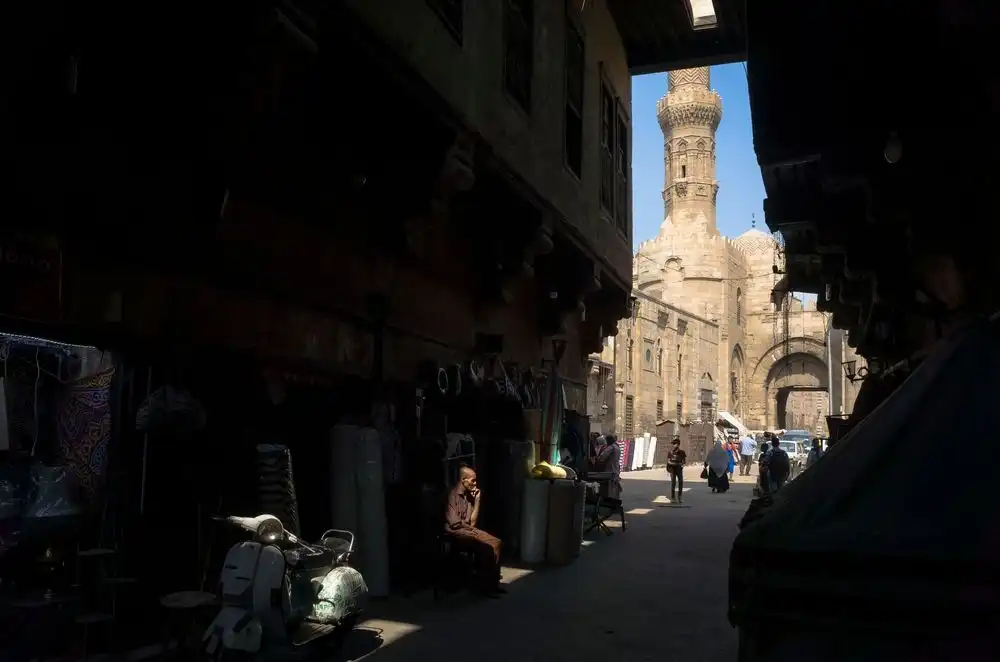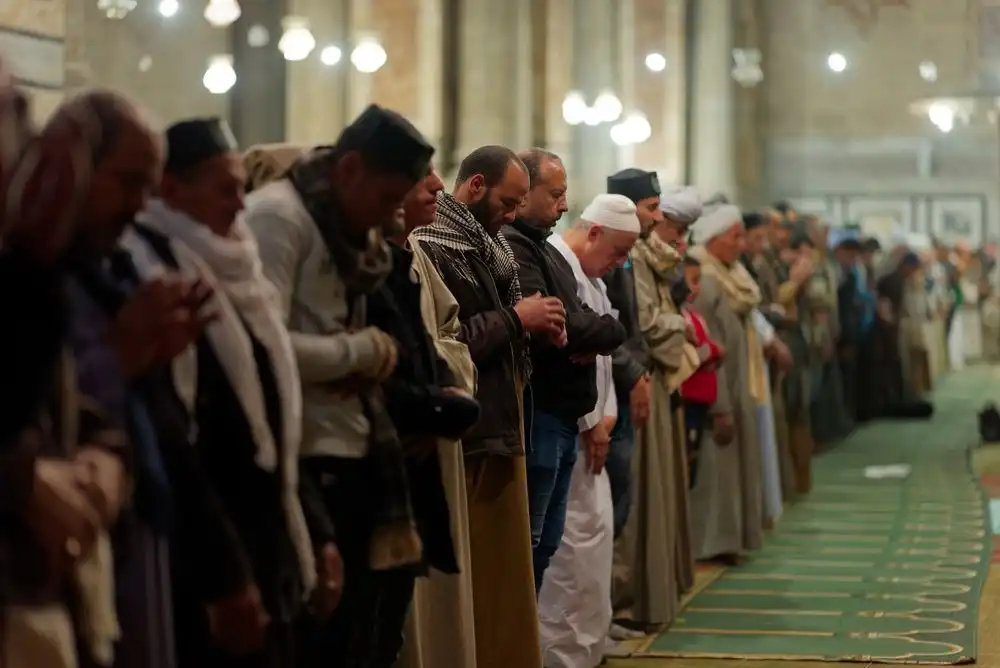Home>The rise, politicisation, and decline of Egyptian Salafism

22.04.2024
The rise, politicisation, and decline of Egyptian Salafism
Interview with Stéphane Lacroix
Stéphane Lacroix, Associate Professor of Political Science at Sciences Po, Researcher at CERI, and Co-Director of the Chair for the Study of Religion, has just published Le Crépuscule des saints: Histoire et politique du salafisme en Egypte (CNRS Editions). In this interview, Stéphane answers our questions about this book and, more broadly, about Salafism in Egypt.
How would you define Salafism, in a few sentences?
First and foremost, the term “Salafism” refers to a particular understanding of Islam, based on a certain number of fundamentals: Salafis call for a return to what they consider to be an original orthodoxy, rooted in a literal reading of the sacred texts, in contrast to the more rationalising approaches to creed that have dominated Islam since medieval times. They harbour particular hostility towards non-Sunni movements (especially Shi’ism) and Sufi mysticism, which they see as nothing more than superstition. They also advocate the application, in the daily life of Muslims, of a rigorous orthopraxy which they consider to be in keeping with the tradition of the Prophet of Islam and his companions.
In addition to this particular understanding of Islam (which remained a very minority position until the last decades of the twentieth century), the term “Salafism” also refers to the movement that was set up to disseminate it. Broadly speaking, this movement advocates a “purification” of Islam (in my book, I describe the Salafis’ “grammar of action” as a “grammar of purity”) and the creation of new generations of Muslims who adhere to this purified Islam.
In Egypt at least, the Salafis seem to have won the battle of ideas at the start of the twenty-first century, and to have succeeded in establishing their vision of Islam as the norm. How did they manage to do this?
What my book seeks to explain is that modern Salafism was born more or less at the same time as Islamism, that the two movements are largely distinct, and that it is important to distinguish between them in order to identify their respective actions and effects. Salafism and Islamism are the two main heirs of the Muslim reformism of the late nineteenth century, which sought to find in Islam the solution to the decline of Muslims. Salafism sees the problem as primarily religious: it advocates the purification of Islam, so it is religiously very strict, but it is wary of engaging in any political dissent. It aims to reform society from below, through the pen and through preaching, in order to rebuild a community of the faithful. Islamism, on the other hand, is above all political: while it accepts the need to work on society in order to build up a militant base, it considers that the solution ultimately liesin taking control of the state, so as to rebuild it on an Islamic basis. Islamism is less concerned with religious purity: it more often considers Islam as a matter of identity, rather than as an original essence to strive towards (as is the case with the Salafis).

This dichotomy is particularly evident in Egypt, where Salafism was formally organised from 1926 onwards, with the foundation of the Ansar al-Sunna organisation. Islamism emerged soon afterwards with the creation of the Muslim Brotherhood in 1928. The two movements were in competition from the outset. But while Islamism has attracted a large body of academic work, Salafism has largely gone unnoticed, precisely because it avoids political conflict. To sum up a complex argument in a few lines, I would say that this has been its main advantage: successive Egyptian governments have seen the Muslim Brotherhood as adversaries, because they were direct competitors for power.
Meanwhile, the authorities saw Salafism either as being of no consequence because its activities were limited to the religious sphere, or as an ally capable of undermining the Brotherhood in the religious sphere. However, the Salafis were also effective campaigners for the causes they espoused: whether in the religious publishing market, in which they became active very early on so as to promote their favoured authors, or in preaching, where they learnt to organise themselves by copying the successful methods used by Islamist movements, they ended up exerting a massive influence on the definition of Islamic norms. Of course, the financial support they received from the Gulf States, especially Saudi Arabia, also played a part, but it is essential to analyse the internal dynamics in Egypt to understand why Salafism was able to gain such a strong hold.
Early Salafism kept away from politics and respected the authorities of the time, but things changed a few decades ago when the Salafis had to face competition from other Islamic movements. Can you tell us a little about this evolution? More broadly speaking, now that Salafis have come to dominate the religious sphere, what is their current relationship with politics? What role did they play in the Egyptian revolution of 2011 and then during the transition?
In the 1970s, the boundaries of the two ideal-types that I defined earlier, “Islamists” and “Salafis”, became somewhat blurred. This was partly because, from the 1970s onwards, Salafism started to exert a normative force in militant religious circles. Paradoxically, it was during the period of Gamal Abdel Nasser in the 1950s and 1960s that Salafism won its first victory in the battle of norms: Nasser eliminated the Brotherhood and wanted to put official Islam under his thumb by forcing its ulema to provide religious endorsement to socialism. All this created a massive vacuum in the religious field, which was gradually filled by Salafism, whose main organisations continued to operate without any real hindrance under Nasser.
This initial victory had paradoxical consequences: when a new generation of political activists emerged in the name of Islam in the 1970s, many did not disavow their initial Salafi socialisation, and others even went so far as to reinterpret certain Salafi ideas in order to politicise them. The result was a veritable cultural melting pot, typically represented by the G ama‘at Islamiyya groups that dominated Egyptian campuses in the 1970s, whose radical fringe ended up assassinating Sadat in 1981.
The period of cultural ferment was followed by a new clarification of positions at the end of the 1970s: some members of Gama‘at Islamiyya groups abandoned all political protest and re-founded Salafism with a new organisation, the Salafi Call (al-Da‘wa al-Salafiyya), based in Alexandria; others chose to prioritise political action, either by joining the Muslim Brotherhood and abandoning their Salafi religious culture (although not entirely), or by extending their political action into armed violence, within the Gama‘a Islamiyya and Egyptian Islamic Jihad movements. The dichotomy between Salafism and Islamism was thus re-established, although grey areas continued to exist at their boundaries.

This initial politicisation is somewhat different from that which occurred after the 2011 revolution, with the creation of the Nour party, which garnered more than 25% of the vote in Egypt’s first free parliamentary elections, and became the second largest political force in parliament. After some initial power struggles, the Nour party became the political arm of Salafi Call, the major organisation founded in the late 1970s (and the second largest religious mass organisation in Egypt after the Muslim Brotherhood). However, Nour did not behave like an Islamist party, in that it did not seek to take control of the state, for the simple reason that it did not believe in reform from above. Instead, the party sought to act as a lobby, in parliament and in the political sphere, devoted to defending the interests of Salafi Call, which made up its social and religious base. It thus acted on the principle (true to the original Salafi “grammar of action”) that the only worthwhile objective is to transform society and thereby preserve the Salafi Call and extend its field of action. With this in mind, the Nour party Salafis identified the Muslim Brotherhood as a threat from the outset: they were convinced that if the Brotherhood took over the state, they would use it to assert their control over the religious sphere, to the detriment of the Salafis. The victory of President Morsi, a member of the Brotherhood, in June 2012 only reinforced these fears. This led to fierce competition and one-upmanship between the Brotherhood and the Salafis. As the Brotherhood was always under pressure “from the right”, it constantly had to demonstrate its conservatism, which prevented it from claiming the “centre ground”, as the Islamist party Ennahda did in Tunisia by forming alliances with secular parties. The result was a damaging polarisation, which ultimately fuelled support among the Brotherhood’s opponents for the coup d’état of 3 July 2013. This coup was also supported by the Salafis, who were only too happy to get rid of the threat posed by the Brotherhood.
What is the state of Salafism in Egypt now? And what about in Saudi Arabia and the Gulf States? Is there a solid foundation for its predominance among Sunnis? What does the future hold for the movement at a time when the Salafist utopia has collapsed?
By supporting the coup, the Salafis of the Nour party and its parent organisation, the Salafi Call, were undoubtedly hoping to form a lasting alliance with the Egyptian army. In their dream scenario, the army would have relied on them to regain control of the religious sphere. However, things did not quite work out that way.
The Nour party and the Salafi Call certainly escaped the brutal repression that fell on the Brotherhood and its allies, culminating in the massacre of a thousand of their supporters in August 2013 in two Cairo squares. Nour was even able to maintain some symbolic representation in the parliament, now taken over by the military (currently less than ten MPs). But the army does not trust them. In order to regain control over religious matters, President Sisi has preferred to rely on a reinvigorated state Islam, embodied by the al-Azhar university-mosque, and on a new legal apparatus for controlling mosques. The Salafis still wield real influence, but this influence has been severely limited. The Salafi Call has also lost part of its base, which became dissatisfied with the organisation’s political positions. Salafi sheikhs, once seen as quasi-mythical figures inspired by an unchanging Islam, have lost some of their aura by getting their hands dirty with politics. As a result, we have seen a decline in the influence of the Salafis in Egypt, albeit in relative terms.

Transformations currently underway at the regional level, especially in the Gulf States, are contributing to this decline. As I said earlier, it would be simplistic to attribute the rise of Egyptian Salafism entirely to the flow of financial manna from the Gulf. The fact remains, however, that this has helped to create favourable conditions for its growth. For almost a decade now, we have been witnessing a reconfiguration of the religious space in these countries. This is particularly notable in Saudi Arabia, a country that has historically invested heavily in Salafi proselytism: Crown Prince Mohammed bin Salman, the kingdom’s strongman leader since 2015, has brought the ulema to heel, taken control of religious discourse, and is now seeking to promote a “moderate Islam” in line with his Vision 2030 for transforming the country. In this new configuration, Saudi conservatism, together with its proselytising dimension, is experiencing a severe decline. Also contributing to the regional backlash against Salafism are the United Arab Emirates, a country that spends a lot of money promoting Sufism, which has historically been the antithesis of Salafism. The Salafis still have support in Qatar and Kuwait, but even this has seen a certain decline.
It is still too early to say what the outcome will be. Salafism has profoundly reshaped Sunni religious norms and its conservative influence remains considerable, but themovements that once led this “normative revolution” are now experiencing a definite crisis.
Interview by Corinne Deloy, translated by Sam Ferguson
Cover image: Cover of the book Le Crépuscule des saints. Histoire et politique du salafisme en Egypte (CNRS Editions).
Photo 1: Cairo. Photo by mohamed abdelzaher for Shutterstock.
Photo 2: Tunnel and gate of Bab Zuweila, Cairo. Photo by art of line forShutterstock.
Photo 3: 5 January 2023, El Refai mosque, Cairo. Photo by MaguedM for Shutterstock.
Follow us
Contact us
Media Contact
Coralie Meyer
Phone : +33 (0)1 58 71 70 85
coralie.meyer@sciencespo.fr
Corinne Deloy
Phone : +33 (0)1 58 71 70 68
corinne.deloy@sciencespo.fr
